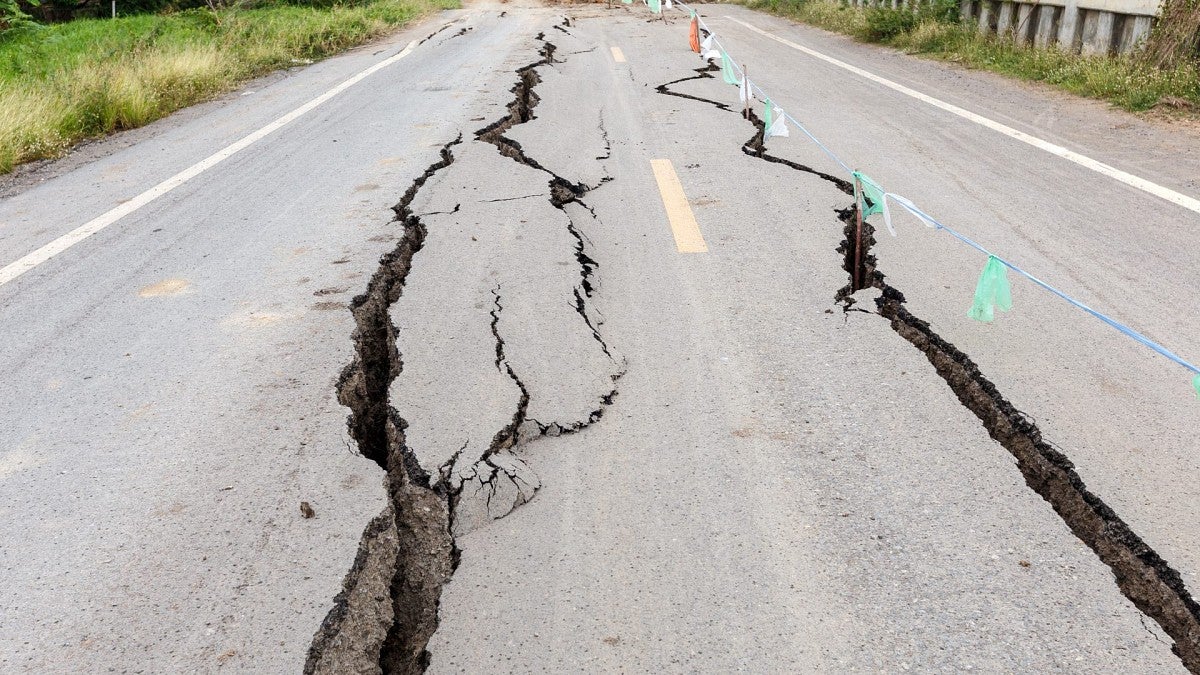The University of Oregon will participate in the annual Great Oregon ShakeOut on Thursday, Oct. 17, and is recommending all employees and students take part in the earthquake safety drill at 2:17 p.m.
The UO will send a notification that the drill is about to start through the UO Alerts mass notification system.
The event is designed to promote earthquake preparedness, an important issue in a region that faces the risk of a destructive Cascadia Subduction Zone earthquake and coastal tsunami, as well as periodic, less severe events. Earthquakes can happen anytime and almost anywhere, and most injuries are caused by falling or flying objects.
Representatives from UO Safety and Risk Services, the Cascadia Region Earthquake Science Center and the Oregon Hazards Lab are hosting two other events during the ShakeOut week to raise awareness of earthquake science and preparedness.
A training for employees and students will take place in the Erb Memorial Union Miller Room from noon to 1 p.m. on Oct. 16. Participants will learn about earthquakes, the Cascadia Subduction Zone and what steps individuals can take to be more prepared on campus and at home.
On Oct. 17 from 6:30 to 8 p.m. at the Museum of Natural and Cultural History there will be a panel of local earthquake scientists and emergency managers from the UO and local agencies.
Both events will kick off with a preview of the new Rumblings: Preparing for Cascadia documentary, which is sponsored by the Oregon Department of Human Services and features UO employees.
More about the ShakeOut
The ShakeOut is an opportunity to practice “Drop, Cover and Hold On” for 60 seconds:
- Drop to the ground.
- Cover your head and neck with your arms and bend over to protect your vital organs. Seek additional shelter, if possible, by getting under a sturdy desk or table nearby. If no shelter is available, crawl next to an interior wall.
- Hold on to your shelter and be prepared to move with it until the shaking stops.
These are the recommended protective actions to take during an earthquake. Do not attempt to move to more than a few feet or run outside. Shaking can quickly become so violent that you may be unable to run or crawl.
Modification may be necessary for specific individuals, such as people with access and functional needs. More information about protective actions is available from the Earthquake Country Alliance.
Alert apps
In addition to signing up for UO Alerts, people can receive ShakeAlert on their cellphones. The ShakeAlert Earthquake Early Warning System can detect significant earthquakes quickly so alerts can be sent to people before they feel shaking, giving them time to drop, cover and hold on. It is operated by the U.S. Geological Survey in partnership with the Oregon Hazards Lab.
All Oregonians can receive earthquake early warning alerts on their personal cellphones via three different methods: from the Wireless Emergency Alert System, Android and Apple operating systems, and the ShakeAlert-powered app MyShake. To learn more about the ShakeAlert Earthquake Early Warning System, visit the U.S. Geological Survey website.
For more tips and training on earthquake preparedness and response for individuals and UO departments, visit the Safety and Risk Services website. This page contains resources for creating a two-week emergency kit and securing offices and living spaces.


